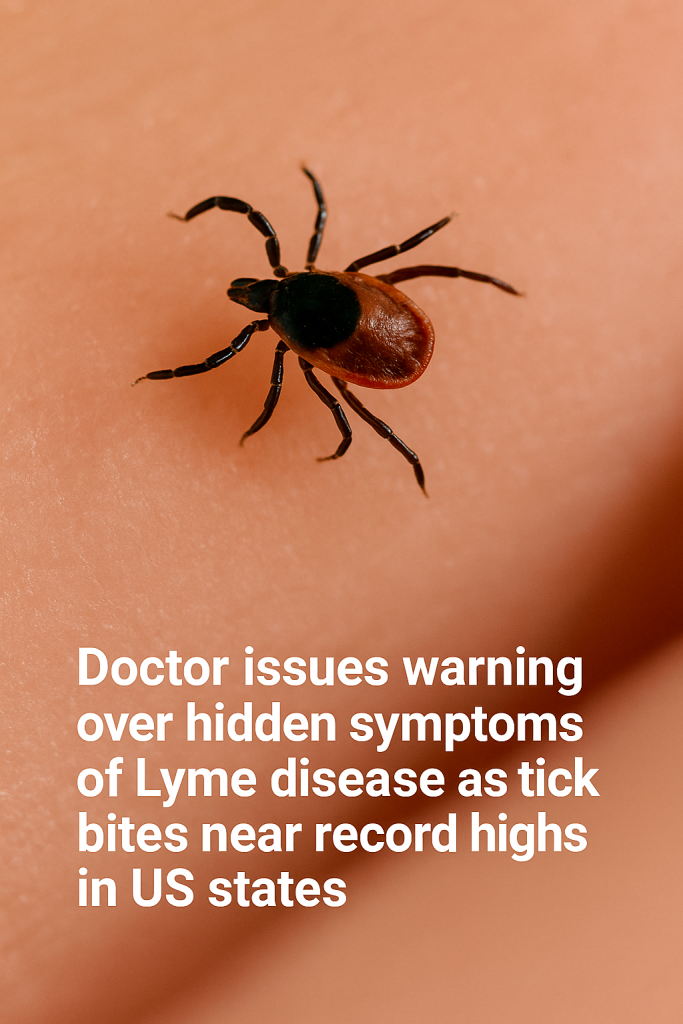As spring blooms and outdoor activities surge, a US doctor is issuing a critical warning about Lyme disease—an illness often associated with ticks that are now biting Americans at record-breaking rates across numerous states. While many are familiar with the telltale “bull’s-eye” rash signaling the disease, experts emphasize that some symptoms are far subtler and easily overlooked, potentially delaying crucial treatment.
Recent data indicates tick bite reports have surged to unprecedented levels in 2024, with multiple states experiencing a dramatic increase in encounters with ticks—tiny arachnids capable of transmitting Lyme disease and other dangerous infections. The rise has health professionals sounding the alarm, especially because Lyme disease can manifest with hidden or mild symptoms that are not immediately linked to tick exposure.
“Tick season is here, and the risks are higher than ever,” said a leading infectious disease specialist. “People often think a Lyme disease diagnosis hinges on seeing the classic rash, but that’s only part of the picture. Many patients develop less obvious symptoms that can easily be mistaken for other conditions or dismissed altogether.”
Indeed, while the erythema migrans rash (commonly called the bull’s-eye rash) is a well-known hallmark of Lyme disease, it does not appear in all cases. Instead, symptoms such as persistent fatigue, joint and muscle pain, headaches, fever, and neurological issues—like numbness, tingling, or facial palsy—can serve as subtle indicators of infection. These hidden symptoms may emerge days or weeks after a tick bite, making it harder to recognize and diagnose early.
The consequences of missing these signs are serious. Lyme disease, caused by the bacterium Borrelia burgdorferi transmitted through tick bites, can lead to debilitating chronic complications if not treated promptly. Early intervention with antibiotics significantly increases the chance of a full recovery, whereas delayed diagnosis may result in prolonged symptoms and more intensive medical care.
Adding to the concern, experts report that factors like climate change, warmer winters, and expanding tick habitats are contributing to higher tick populations and wider distribution throughout the US. This ecological shift exposes more people to tick bites than ever before, particularly those engaging in outdoor activities such as hiking, gardening, and camping.
To protect against infection, health officials recommend:
- Wearing long sleeves and pants when in wooded or grassy areas;
- Using EPA-approved insect repellents containing DEET or permethrin-treated clothing;
- Performing thorough body checks for ticks after outdoor exposure;
- Removing any attached ticks promptly and properly with fine-tipped tweezers;
- Monitoring for any unusual symptoms in the days and weeks following potential exposure.
Public awareness campaigns urge people not to ignore seemingly mild or vague symptoms following tick bites. Early medical consultation can be lifesaving. In particular, those living in states reporting tick bite spikes should remain especially vigilant.
“Some signs are easier to spot than others,” the doctor cautions. “Recognizing that Lyme disease can present quietly or atypically is key to preventing serious outcomes. If you suspect you may have been bitten or notice new unexplained symptoms, seek medical advice urgently.”
With tick bites approaching record highs and hidden Lyme disease symptoms on the rise, staying informed and cautious this season could mean the difference between swift recovery and lingering illness.



